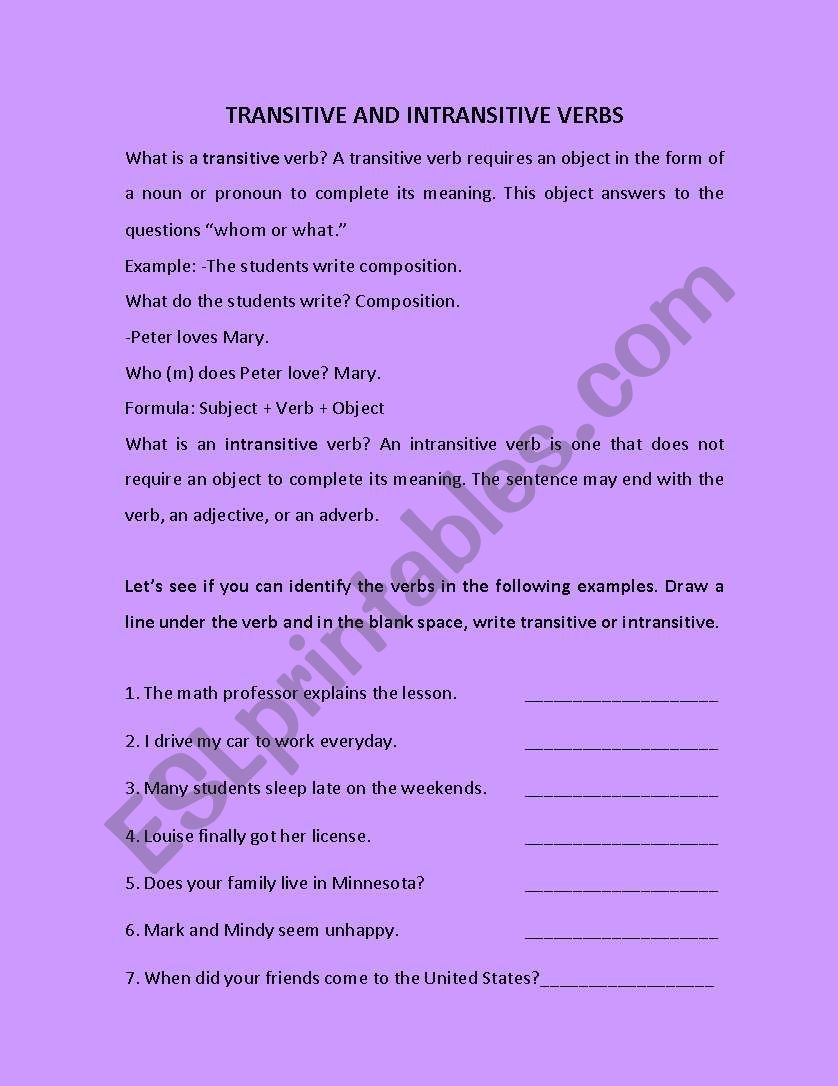Verbs are an essential part of any sentence, as they are the words that express an action or a state of being. Transitive and intransitive verbs are two types of verbs that are important to understand in order to construct sentences correctly.
Transitive verbs are verbs that require a direct object to complete their meaning. In contrast, intransitive verbs do not require a direct object to complete their meaning. By practicing with a worksheet, students can improve their understanding of these verb types.
Transitive or Intransitive Verb Worksheet
Below is a worksheet that contains a mix of transitive and intransitive verbs. Students are required to identify the type of verb used in each sentence and label them accordingly. This exercise will help students distinguish between the two types of verbs and use them correctly in their own writing.
1. The cat chased the mouse. (Transitive)
2. The sun shone brightly. (Intransitive)
3. She opened the door. (Transitive)
4. The tree fell during the storm. (Intransitive)
5. He ate his lunch quickly. (Transitive)
By completing this worksheet, students can practice identifying transitive and intransitive verbs in context. This will help them become more confident in using these verbs correctly in their own writing.
Understanding the difference between transitive and intransitive verbs is crucial for constructing grammatically correct sentences. By practicing with worksheets like the one provided above, students can improve their grasp of these concepts and enhance their overall writing skills.
In conclusion, the use of transitive and intransitive verbs plays a significant role in sentence construction. By using worksheets to practice identifying these verbs, students can strengthen their understanding and improve their writing skills. With regular practice, students can become more proficient in using transitive and intransitive verbs effectively in their writing.
